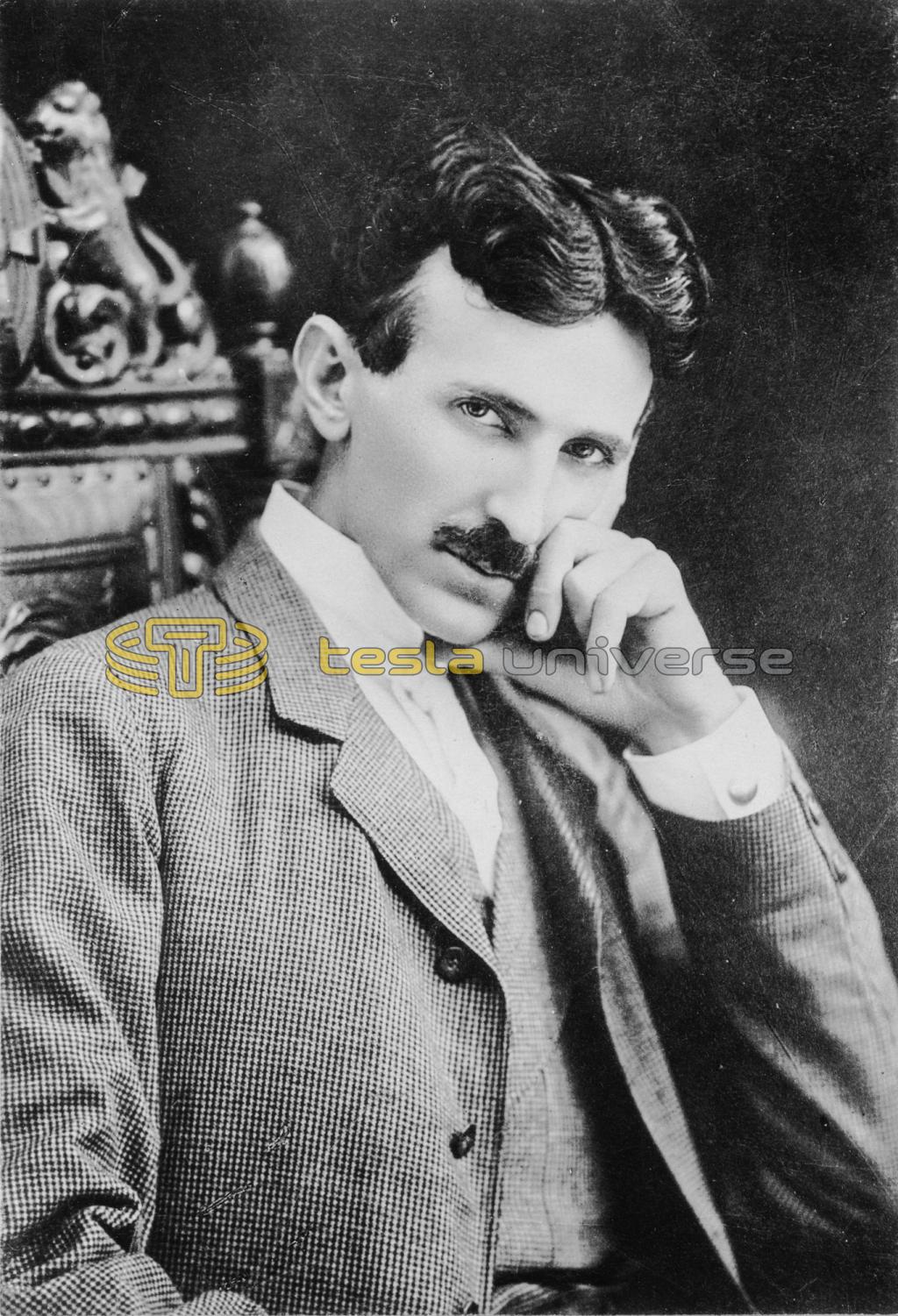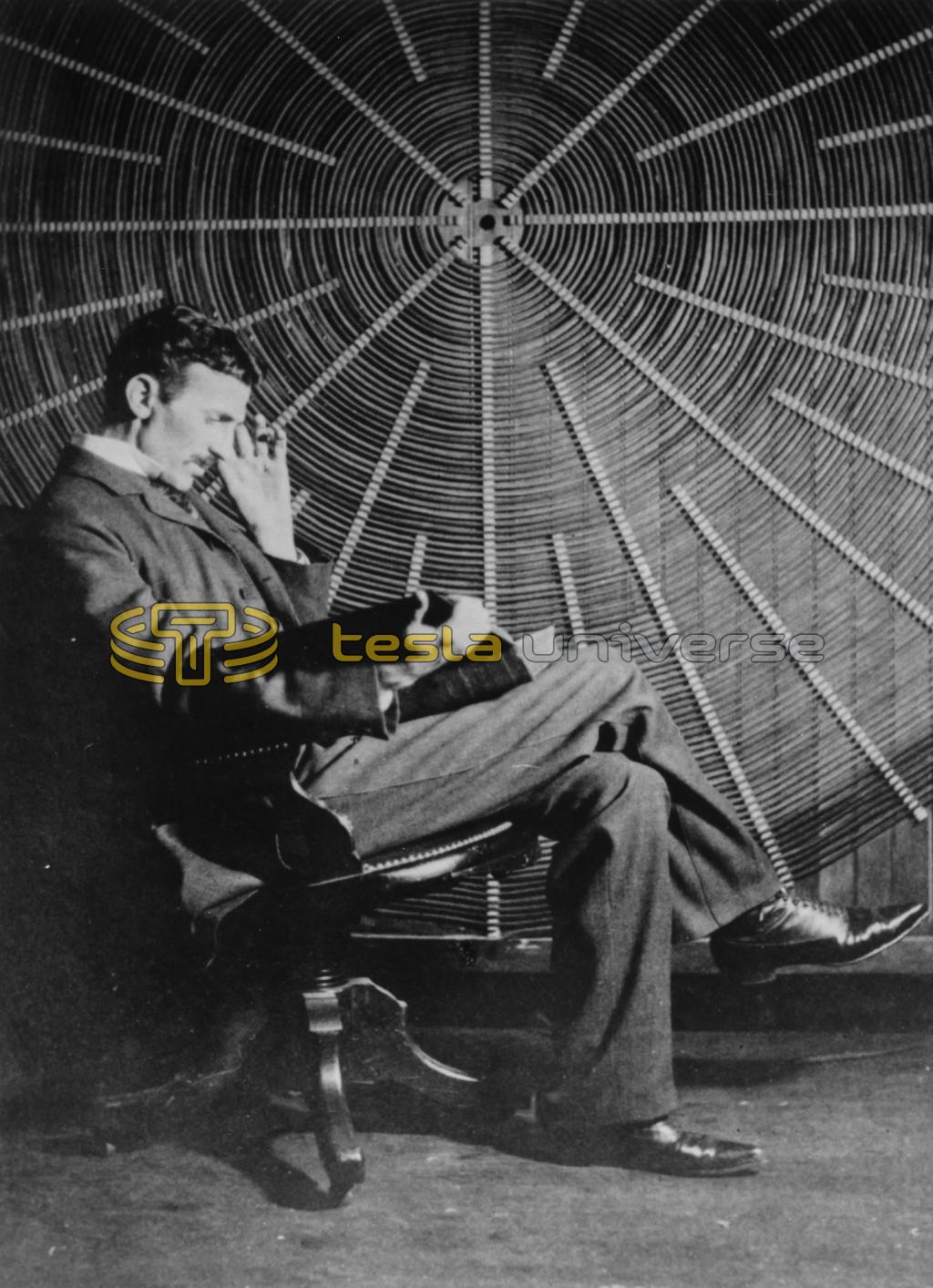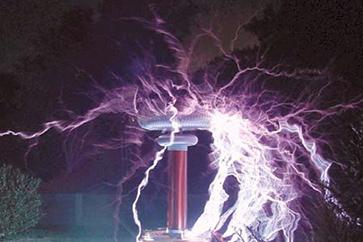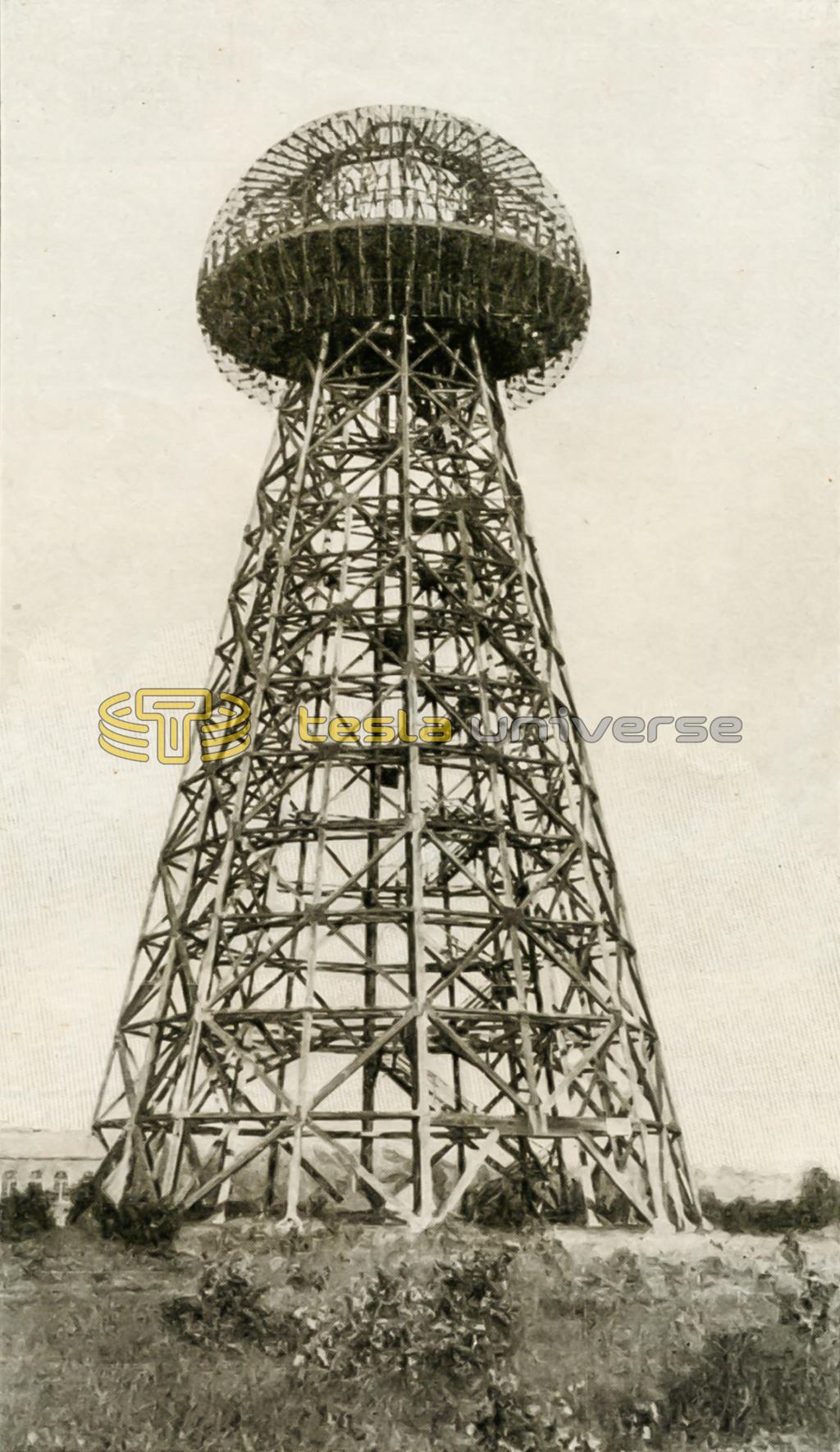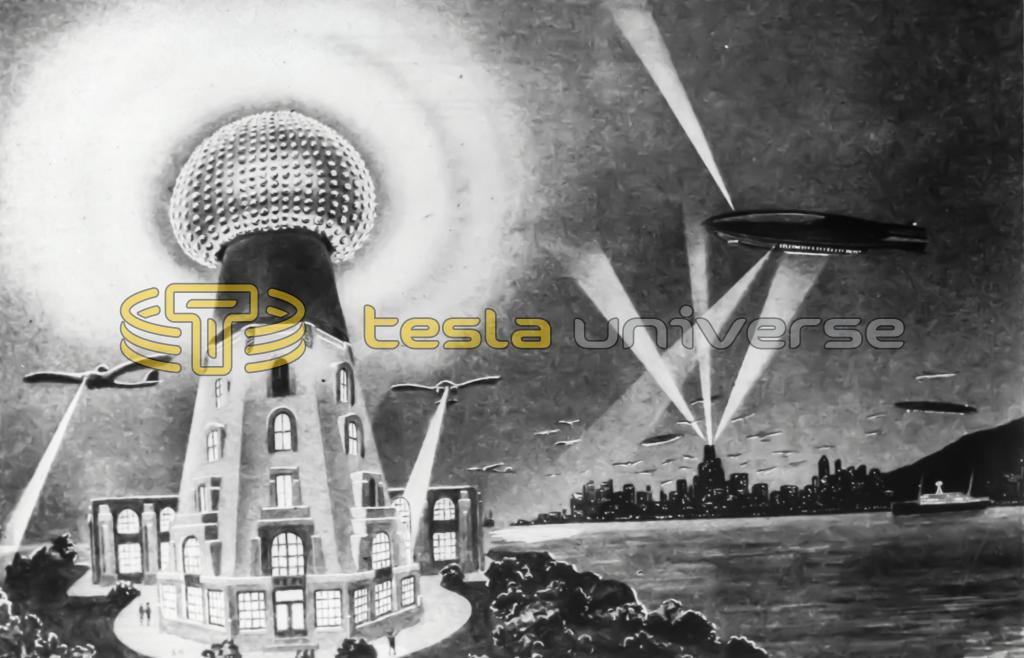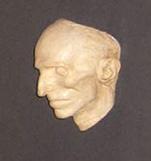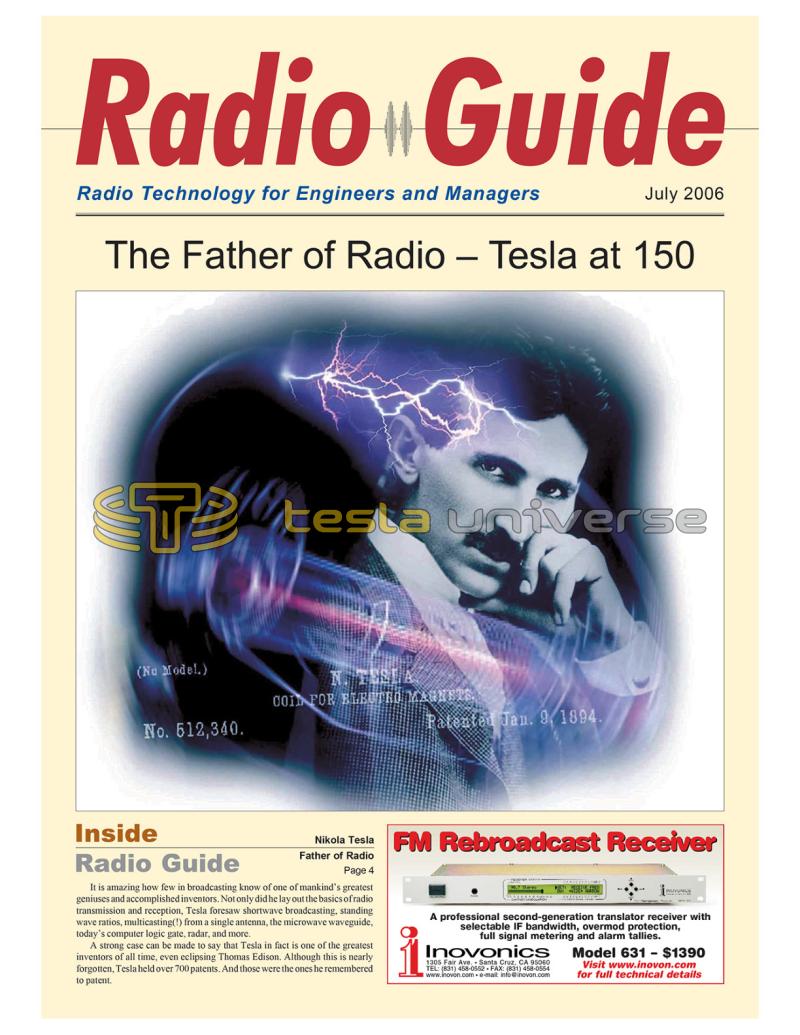
Nikola Tesla Articles
The Father of Radio - Tesla at 150
Nikola Tesla Father of Radio
July 2006 marks the 150th anniversary of Nikola Tesla’s birth. It is likely you know the name. But what do you know about the man? Kevin Webb fills us in.
More than a Coil
By now, you may be thinking “Hmm, Tesla. Yes I believe I have heard the name. There’s the Tesla Coil and, um something else.” Yes, something else indeed!
It is amazing how few in broadcasting know of one of mankind’s greatest geniuses and accomplished inventors. Not only did he lay out the basics of radio transmission and reception, Tesla foresaw shortwave broadcasting, standing wave ratios, multicasting(!) from a single antenna, the microwave waveguide, today’s computer logic gate, radar, and more.
A strong case can be made to say that Tesla is, in fact, is one of the greatest inventors of all time, eclipsing even Thomas Edison. Although he is often nearly forgotten, Tesla held over 700 patents - and those were the ones he remembered to patent.
Amazing Stuff
Imagine being at Madison Square Garden and witnessing a radio remote-controlled submarine that could execute complex macro commands using the precursor to your modern-day computer’s logic gate over three separate radio frequencies - in 1898!
The sheer brilliance of this and similar inventions inspires the great passion many engineers need to share with fellow broadcasters about Tesla.
To touch just the surface of what Tesla has accomplished - some feats still amaze scientists to this day, while some feats are still unexplained - would take hundreds of hours of video. Tesla’s inventions changed the world and were precursors to much of today’s technology.
Back at the Start
When did radio start? 1920 at KDKA? 1909 at WHA or at Herrold’s station? Try 1893, when Tesla appears to have invented his radio, although he did not apply for a patent until four years later. (He was still over three years ahead of Marconi.) It took until 1943, shortly after Tesla’s death for him to be vindicated - by no less than the US Supreme Court - as being the true inventor of radio.
Speaking of Marconi: he was the one who claimed to have received one single letter - which could easily have been mistaken for static - not to mention there is the pesky fact that Marconi could not reproduce that same feat for several more years.
So many others have either borrowed or outright taken from Tesla what was rightfully his or have smeared his name (including Thomas Edison) that very few really are aware of the true extent of Tesla’s immense contributions to technology.
But I digress. The best way to introduce you to Nikola Tesla is to focus on just who he was and what Tesla contributed to radio. Heck, Tesla is the True Father of Radio.
Vital Stats
Precisely at midnight between July 9 and 10, 1856, Nikola Tesla became the fourth child born to The Reverend Milutin Tesla and his wife Duka Mandic Tesla in the village of Smiljan, Croatia.
Nikola’s home life seemed an ideal incubator for a fertile mind and prolific inventor-to-be. His father was a Serbian Orthodox priest, a gifted writer and poet. His mother was able to recite entire volumes of native and classic European poetry and was, in his own words, a great inventor in her own right.
Tesla inherited a mix of his parent’s characteristics. He was a poetic dreamer, highly intelligent and altruistic. Tesla believed his inventive genius and photographic mind came from his mother. As a youth Tesla spent countless hours in his library reading and absorbing as much as possible.
Most importantly, it is Tesla’s exceptionally steely self-discipline which he developed as a teen along with a desire for invention that drove him every day of his life as an adult.
A Young Prodigy
At age five Tesla built a small waterwheel unlike anything found anywhere in his countryside. Even though it was smooth and had no paddles, it spun quite effectively in the water’s current. This was to be the basis for a unique bladeless turbine which he perfected years later.
Tesla later put it this way: “Before I put a sketch on paper, the whole idea is worked out mentally. In my mind I change the construction, make improvements, and even operate the device. Without ever having drawn a sketch I can give the measurements of all parts to workmen and, when completed, all these parts will fit just as certainly as though I had made the actual drawings.
“It is immaterial to me whether I run my machine in my mind or test it in my shop. The inventions I have conceived in this way have always worked. In thirty years there has not been a single exception. My first electric motor, the vacuum wireless light, my turbine engine and many other devices have all been developed in exactly this way.”
During his childhood, Tesla continued to invent. As befit a young man, not everything was genius. One whimsical invention consisted of a motor powered by sixteen live June bugs! When the glued insects beat their wings the bug-powered engine appeared ready to take off. However we will never know if this engine was meant to be or not. A young friend of Tesla’s stopped by, noticed the jar of June bugs, and proceeded to cram a mouthful of the live “engine fuel” into his mouth. Young Tesla promptly threw up and abandoned his project.
Illness ... Or Inspiration?
Beginning in childhood, Nikola was plagued throughout his life from time to time by a unique “ailment:” strong flashes of light that interfered with his normal vision during moments of excitement, something that his brilliant older brother Daniel suffered from as well before his untimely death at a young age.
In later years, Tesla would describe it as “a peculiar affliction due to the appearance of images, often accompanied by strong flashes of light, which marred my sight of real objects and interfered with my thought and action. They were pictures of things and scenes which I had really seen, never of those I imagined.
“When a word was spoken to me the image of the object it designated would present itself vividly to my vision and sometimes I was quite unable to distinguish whether what I saw was tangible or not. This caused me great discomfort and anxiety. None of the students of psychology or physiology whom I have consulted could ever explain satisfactorily these phenomena.”
He believed that these hyper-real images were caused by a reflex action of the brain upon the retina while under great excitation and were not hallucinations. At night when a scene would appear before his eyes, Tesla described how the vivid scene would thrust itself before his eyes. The scene would be so realistic that even if he jabbed his hand through it, it would remain fixed in space.
Seeing His Inventions
Tesla was unique in that he could visualize an invention before even creating it in physical form, a feat many of his employees and associates would verify years later.
In his mind Tesla was able to picture the object of his impending invention and measure its dimensions within fractions of an inch. He said his mental projections were “absolutely real and tangible in every detail, even to the minutest marks and signs of wear.”
Tesla’s disdain for anything drawn out on paper caused consternation with Tesla’s employees, assistants and engineers with whom Tesla worked as he never required a blueprint or drawing to commence with construction while those around him did. Perhaps the very ailment that drove Tesla to a physical wreck at times was also his greatest strength since he could so vividly visualize his ideas in his mind in three-dimensional form, complete with motion and exploded views.
College Days
Tesla completed his elementary and “high school” education in Cartstatt, Croatia, where he distinguished himself by compressing the four years’ course into three and graduated in 1873. Returning home during a cholera epidemic, he was stricken by the disease so seriously that his formal studies were interrupted for fully two years.
However, Tesla did not waste the time for he had become passionately fond of experimenting, devoting his energies to electrical study and investigation. Resuming his studies at the Polytechnic School in Gratz, he finished at the University of Prague where he was to prepare for work as professor of mathematics and physics.
Fortunately for mankind, while at Gratz, Tesla first saw and operated a Gramme machine, which inspired him to improve on the motor’s necessity to use commutators and brushes. Rather than become a professor as his parents had hoped, he would go on to create a stunningly simple, yet effective, AC motor from this point of inspiration. (At that time DC power ruled the world but it was extremely inefficient and dangerous to transfer.)
As was typical for Tesla, he was reciting a favorite passage of poetry when he was inspired by a sunset. Suddenly he stopped, waving his arms - frozen in midair as if he was having a seizure. Tesla had another major epiphany: “The idea came like a flash of lightning, and in an instant the truth was revealed,” he said. It was at that precise moment in time that Tesla revolutionized the world with Alternating Current.
This was an entirely new system of delivering polyphase AC power, of the AC induction motor, and of the dynamos that would generate the AC electricity. This was a significant moment in technical history for all mankind. Tesla changed everything.
Into the Commercial World
Tesla soon gave up his intention of becoming a professor once and for all and decided to embrace a steely resolve and discipline that would forever steer his life. His level of high discipline would enable him to work for days on end with very little or no sleep, while creating some of his most magnificent inventions.
Leaving school, Tesla began working for the Central Telegraph Office in Budapest, improving the voice amplifiers used in telephones. After working for the Edison company in Paris, Tesla left to work for Edison himself, emigrating to the United States in 1884 - where he landed with four cents in his pocket.
Edison was struck by Tesla’s single-handed ability to complete complex projects where other engineers had given up. But the relationship did not last very long.
When Tesla offered to improve Edison’s primitive DC dynamos, Edison accepted the challenge promising him “there’s $50,000 in it for you if you can accomplish it.” Tesla promptly set upon his task working almost non-stop, through days and nights with very little sleep, for a year - but he completed the task. When Tesla asked Edison for his $50,000, Edison simply exclaimed “Tesla, you simply do not understand our American humor.”
It would not be the first time that Tesla would be swindled out of what was due to him. Some accounts say Tesla resigned instantly, walking away without a word. He then founded his own “Tesla Arc & Light Co.,” and started producing motors and generators for polyphase alternate currents. Soon, George Westinghouse bought the patent rights to Tesla’s system of dynamos, transformers and motors, eventually using Tesla’s alternating current system to light the World’s Fair Exposition of 1892 in Chicago.
In time, Tesla himself held some forty patents basic to AC power generation and transmission. Although he did employ assistants, Tesla did the majority of his own work.
The Coil ... The Coil!
The product that carries his name most prominently today, the Tesla Coil - a high-voltage coreless transformer - was invented in 1891, as Tesla sought to solve the problem of transmitting power through the air without wires. His vision was a Utopian world where all people would have free and unlimited power.
It is ironic then that Tesla’s original application for radio transmission came from wanting to send raw power through the air. Nevertheless, Tesla was the first to postulate in US Patent No. 725,605 that for a radio communication system to work it must have “two tuned circuits each at the transmitter and receiver, all four tuned to the same frequency,” by which he meant tuned antenna (output/input) and oscillator (signal/detector) circuits coupled by transformers in each piece of equipment.
Later, from 1901 to 1905, Tesla built what was known as the Wardenclyffe Tower near New York, NY. It was an ill-fated endeavor.
Tesla intended the tower for radio broadcasting and the wireless transmission of electrical power across the Atlantic. A multipurpose platform, it would also provide a defensive “shield” against incoming missiles or attacking airplanes.
This was such a grand undertaking that it would require an entire article devoted to explain this mysterious tower project that was never able to take shape due to a lack of funding and, some say, vision on the part of the investors.
In the meantime, Tesla accepted a commission from Lord Kelvin in 1893 to harness the power of Niagara Falls, culminating in 1896 with ten generators successfully providing 15,000 horsepower of AC electricity - a stunning amount for the era, and bringing many honors to Tesla.
Later Years
Though he should have been one of the richest men of his time, Tesla was cheated time after time by investors, circumstances, and, to a great measure, his own lack of business acumen - he really was more interested in his work than marketing it. If only he had been as good an entrepreneur as he was an inventor, he would have been as rich and as famous as Bill Gates is today.
Finally, the world began to recognize him as a true genius. More awards came his way but despite the honoraries Tesla received later in life, he never did get the same level of recognition as many other great inventors. He performed fewer lectures and had less funds, becoming dependent on the grace of good friends and the occasional stipend from (guilty?) past investors.
As Tesla aged, his eccentricities and quirks increased as well. He believed that pigeons could talk to him and he attributed these “talks” as inspiration for some of his wilder ideas in his twilight years.
It is sad to note that such a great inventor died a tragic, lonely death at the age of 86. A maid found his lifeless body in his hotel room where he had been living by himself for many years. The medical examiner later placed the time of death at 10:30 PM on January 7, 1943, with the cause of death being coronary thrombosis. Tesla had apparently died in his sleep.
A Real Visionary
As to how relevant Tesla is to today’s technology, you may not have thought about this, but right now you use at least several of his inventions most every day: AC power, fluorescent lights, radio transmission and reception, etc. among them.
Also consider this proposal Tesla had for the application of radio: “A ‘world system’ of wireless communications to relay telephone messages across the ocean; to broadcast news, music, stock market reports, private messages, secure military communications, and even pictures to any part of the world.
“When wireless is fully applied the earth will be converted into a huge brain, capable of response in every one of its parts,” Tesla told financier J. P. Morgan. That last sentence could well have been predicting today’s Internet.
Computer scientists with Bell Labs, M.I.T. and many other think tanks were very surprised to learn when they tried to patent new computer-related technology such as robotics or logic gates that they had already been beaten to the finish line by no less than Tesla, many decades previously.
A True Genius
To this day, no one can explain many of Tesla’s feats - things he demonstrated to many witnesses such as Mark Twain or even to World’s fair audiences and fellow scientists. Even now scientists are discovering new truths that Tesla espoused back in the late 1800s!
During this month marking 150 years since Tesla’s birth, let us remember the man that had such a major effect and impact on today’s electronics and broadcasting industry. Pop “Tesla” into a search engine and you will find there is a lot more to learn about this fascinating individual.
We also hope you will pass some of this knowledge on to others. We all will be richer for the experience. Our thanks to the Tesla Society - Switzerland (www.teslasociety.ch) for the pictures used in this article.
